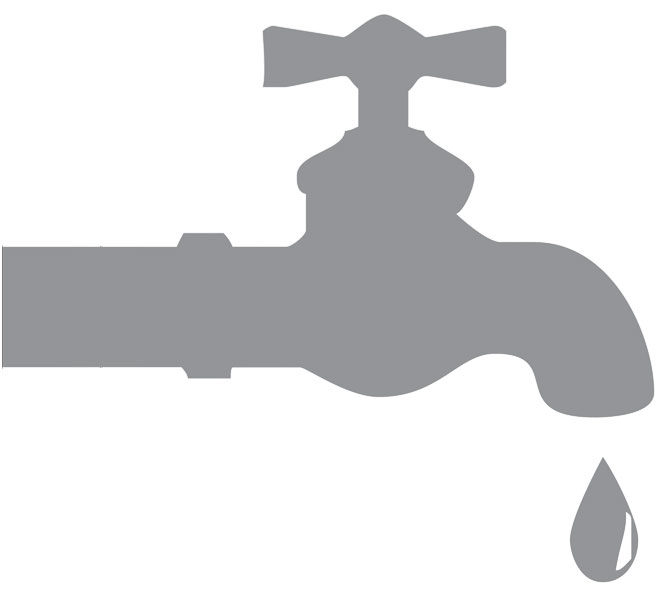DUNKI: THE PERILOUS PATH TO EUROPE
- 30 Mar - 05 Apr, 2024
The world is on the brink of a man-made disaster – one without water. It is time for the citizens of Mother Earth to race against nature’s wrath from a point of no return

In January 2015, the World Economic Forum ranked ‘water crisis as the number 1 global risk based on impact to society as a measure of devastation’.
In the past few weeks, ‘Day Zero’ has been doing the rounds – a day when taps are expected to run dry in Cape Town, South Africa. According to a story run by the New York Times recently, ‘The government cautions that the Day Zero Threat will surpass anything a major city has faced since World War II or the Sept. 11 attacks. Talks are underway with South Africa’s police because “normal policing will be entirely inadequate”… The reason for the alarm is simple: the city’s water supply is dangerously close to running dry.’
And this is not Cape Town’s story alone. A crackling outer layer of the globe was on the cover of Newsweek, featuring ‘A World Without Water’. The story featured Jordan, making it the first country in the world which could soon run out of water. And not only be the last one on the list of nations deprived of this necessity.
With an increasing population, water demand is expected to soar, no surprises there. According to the United Nations World Water Development Report 2017 (UNWWDR), ‘water demand is predicted to increase significantly over the coming decades. In addition to the agricultural sector, which is responsible for 70% of water abstractions worldwide, large increases in water demand are predicted for industry and energy production. Accelerated urbanisation and the expansion of municipal water supply and sanitation systems also contribute to the rising demand.’
According to NASA, 21 out of the world’s 37 aquifers or water saving accounts, as water resource scientists refer to them as, are already moving past their tipping points because of increased usage. Three of nature’s water savings accounts are situated in the Middle East, the border between Pakistan and India and the Murzuk-Djado Basin in northern Africa.
In the coming decades, largest rates of urbanisation will occur which will have a massive impact on wastewater production. ‘By 2030, global demand for energy and water is expected to grow by 40% and 50%, respectively (UN-Habitat, 2016). Most of this growth will be in cities, which will require new approaches to wastewater management. At the same time, wastewater management may also provide some of the answers to other challenges, including food production and industrial development,’ the UNWWDR 2017 report states.
The outcome of climate change, in variations of ‘water cycle dynamics’, is ever more prominent with drier years being more drier and wetter years not being as wet with many of the world’s megacities at the risk of facing a water shortage.
Even in current times ‘two-thirds of the world’s population currently lives in areas that experience water scarcity for at least one month a year.
According to a 2012 US Intelligence report, “The use of water as a weapon or to further terrorist objectives also will become more likely beyond 10 years.”
With climate change resulting in more frequent droughts and floods, the necessity for alternative sources to keep the water supply in check are a need of the second which will have significant socio-economic and environmental consequences. Any more delays and the crisis will only aggravate.
Reusing wastewater
With more usage of water, more wastewater is obviously produced. And this alone can be banked on. As the UNWWDR states, ‘In the face of ever-growing demand, wastewater is gaining momentum as a reliable alternative source of water, shifting the paradigm of wastewater management from ‘treatment and disposal’ to ‘reuse, recycle and resource recovery’. In this sense, wastewater is no longer seen as a problem in need of a solution, rather it is part of the solution to challenges that societies are facing today. Wastewater can also be a cost-efficient and sustainable source of energy, nutrients and other useful by-products. The potential benefits of extracting such resources from wastewater go well beyond human and environmental health, with implications on food and energy security as well as climate change mitigation. In the context of a circular economy, whereby economic development is balanced with the protection of natural resources and environmental sustainability, wastewater represents a widely available and valuable resource. The outlook is undeniably optimistic, provided action is taken now.’
What’s the minimum amount of water needed per day?
As per World Health Organization standards, ‘Based on estimates of requirements of lactating women who engage in moderate physical activity in above-average temperatures, a minimum of 7.5 litres per capita per day will meet the requirements of most people under most conditions. This water needs to be of a quality that represents a tolerable level of risk. However, in an emergency situation, a minimum of 15 litres is required. A higher quantity of about 20 litres per capita per day should be assured to take care of basic hygiene needs and basic food hygiene. Laundry/ bathing might require higher amounts unless carried out at the source.’
The crisis at home
When it comes to Karachi, a city that has more than 25 million residents, (according to stats taken from C40 Cities), water shortages are more frequent with the most populated areas like Gadap, Baldia and Orangi receiving less than 40 per cent water allotted to them, as per the data collected by an NGO, Orangi Pilot Project. With the affluent having the resources, they can rely on water tankers (read: mafia) which cannot be afforded by all and sundry.
COMMENTS